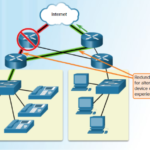The Power of Audio Conferencing in Business Communication
- By -Mash
- Posted on
- Posted in Audio Conference
In the rapidly evolving landscape of business communication, audio conferencing remains a powerful and essential tool. Despite the growth of video conferencing and digital collaboration platforms, audio conferencing offers unique advantages that can significantly enhance business interactions. This article delves into the power of audio conferencing in business communication, highlighting its benefits, applications, and best practices.

Enhancing Accessibility and Flexibility
Widespread Accessibility: Audio conferencing is universally accessible, requiring only a phone line or basic internet connection. This ease of access makes it possible for team members and clients to join meetings from virtually anywhere, regardless of their technological capabilities or location.
Flexibility: Audio conferencing provides flexibility in scheduling and participation. Unlike video calls, which may require specific software or hardware, audio calls can be initiated and joined quickly, accommodating last-minute changes and diverse schedules.
Reduced Barriers: By minimizing the need for high-speed internet or sophisticated devices, audio conferencing reduces barriers to participation. This inclusivity ensures that all stakeholders can engage in discussions, leading to more comprehensive and effective communication.
Streamlining Communication and Decision-Making
Clear Communication: Audio conferencing facilitates clear and direct communication. Without visual distractions, participants can focus solely on the conversation, leading to more straightforward and unambiguous exchanges.
Efficient Decision-Making: The simplicity of audio conferencing supports quick decision-making. Real-time discussions allow teams to address issues, review options, and reach decisions promptly, which can enhance overall business efficiency.
Effective Collaboration: Audio conferencing tools often include features like participant lists and call recording, which help manage discussions and ensure that key points are captured. This capability supports effective collaboration and follow-up actions.
Cost-Effectiveness and Practicality
Cost Savings: Audio conferencing is often more cost-effective than other communication methods, particularly for large-scale or frequent meetings. Many audio conferencing solutions are available at a lower cost than video conferencing platforms, making them a budget-friendly option for businesses.
Practical Use: For routine meetings, status updates, or brief discussions, audio conferencing provides a practical solution that saves time and resources. It eliminates the need for elaborate setups and can be conducted with minimal preparation.
Global Reach: Audio conferencing enables businesses to connect with global teams and clients without incurring substantial travel costs. This global reach helps facilitate international business interactions and expand market presence.
Strengthening Internal and External Relationships
Maintaining Connection: Regular audio conferences help maintain strong connections with team members and clients. Consistent communication fosters trust and rapport, which is crucial for building and sustaining relationships.
Client Engagement: Audio conferencing is an effective tool for engaging clients in discussions, updates, and feedback sessions. The ability to communicate clearly and promptly helps address client needs and concerns, enhancing overall satisfaction.
Team Cohesion: For remote or distributed teams, audio conferencing supports team cohesion by facilitating regular check-ins and collaborative discussions. It helps ensure that all team members are aligned with organizational goals and project developments.
Best Practices for Effective Audio Conferencing
Prepare Agendas: Share meeting agendas in advance to ensure that all participants are prepared and focused on the key topics. This preparation helps streamline discussions and improves meeting efficiency.
Establish Ground Rules: Set clear guidelines for meeting participation, such as muting microphones when not speaking and waiting for turns to speak. These rules help manage the flow of conversation and reduce background noise.
Engage Participants: Actively engage participants by soliciting their input and feedback. Use techniques such as round-robin questioning or periodic check-ins to ensure that everyone has the opportunity to contribute.
Manage Technical Issues: Address technical issues promptly by providing clear instructions for joining the call and troubleshooting common problems. This preparedness helps minimize disruptions and ensures a smooth meeting experience.
Follow Up: After the meeting, send a summary of key points and action items to all participants. This follow-up reinforces the meeting’s outcomes and provides a reference for future discussions.
Conclusion
Audio conferencing remains a powerful tool in business communication, offering accessibility, flexibility, and cost-effectiveness. By streamlining communication, supporting decision-making, and enhancing relationships, audio conferencing plays a crucial role in facilitating effective interactions within and outside of organizations. Implementing best practices and leveraging the strengths of audio conferencing can help businesses maintain clear, efficient, and productive communication, ultimately contributing to their success and growth.



